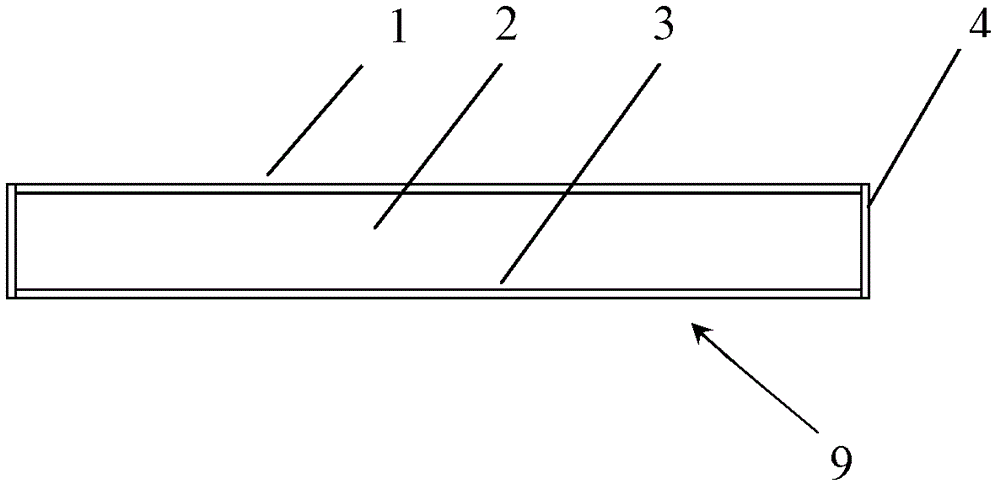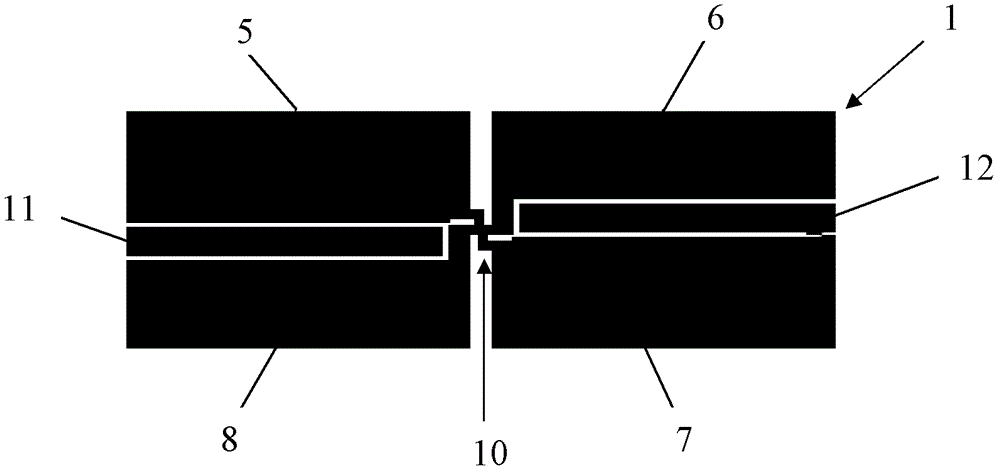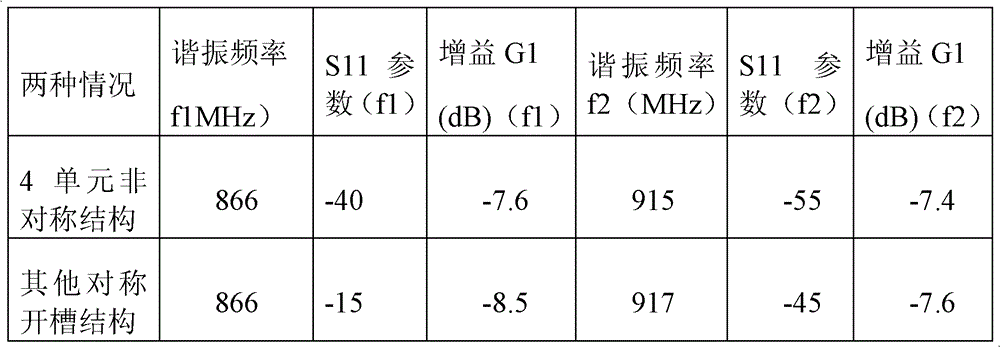Ultra-thin dual-band microstrip patch antenna array rfid tag antenna
A technology of RFID tags and microstrip patch antennas, which is applied in the field of RFID tag antennas, can solve the problems of increased dimensions, inconsistencies, and rising costs of RFID tag antennas, achieve improved bandwidth range, obvious performance, and overcome miniaturization Effect
- Summary
- Abstract
- Description
- Claims
- Application Information
AI Technical Summary
Problems solved by technology
Method used
Image
Examples
Embodiment Construction
[0018] The specific implementation process of the present invention will be described in detail below in conjunction with the accompanying drawings.
[0019] see figure 1 and figure 2 , the ultra-thin dual-frequency microstrip patch antenna array type RFID tag antenna 9 of the present invention has a substrate 2 and a substrate base plate 3 attached to the radiation element array 1 on the upper surface of the substrate 2 and the substrate base plate 3 on the lower surface and located at the radiation element The chip 10 in the center of the array has short-circuit surfaces 4 on both sides of the substrate 2 .
[0020] The radiating element array 1 of the present invention has 4 co-polarized asymmetric radiating elements forming an antenna array, and the 4 radiating elements are all linear poles in the same direction. The first radiation unit 5 and the fourth radiation unit 8 constituting the radiation unit array 1 are located on one side of the chip 10 , and the second radi...
PUM
 Login to View More
Login to View More Abstract
Description
Claims
Application Information
 Login to View More
Login to View More - R&D
- Intellectual Property
- Life Sciences
- Materials
- Tech Scout
- Unparalleled Data Quality
- Higher Quality Content
- 60% Fewer Hallucinations
Browse by: Latest US Patents, China's latest patents, Technical Efficacy Thesaurus, Application Domain, Technology Topic, Popular Technical Reports.
© 2025 PatSnap. All rights reserved.Legal|Privacy policy|Modern Slavery Act Transparency Statement|Sitemap|About US| Contact US: help@patsnap.com



